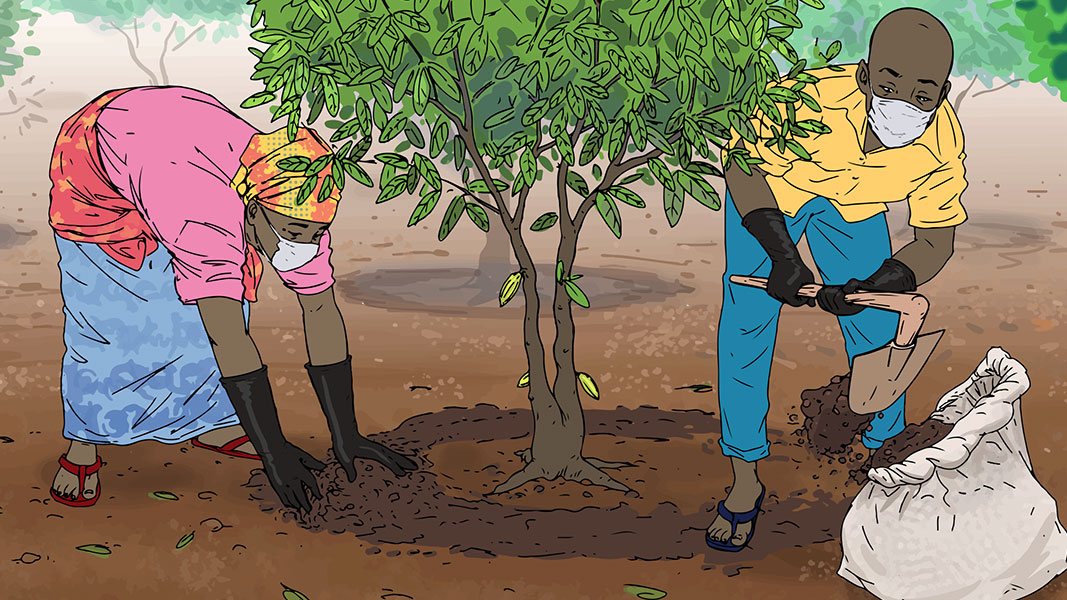Top: Cover art in training manual on making compost and biochar from cacao pod husks. Image courtesy USAID
Approximately 75% of the cacao pod is discarded during the cultivation, harvesting and consumption of cocoa beans, according to an article, “How Cacao Can Do So Much More Than Make Chocolate,” published by the World Resources Institute. “However, if parts like the husk, pulp and bean shell were collected and managed properly, these byproducts could help raise farmers’ incomes, revitalize degraded landscapes, provide food and even produce clean energy.” The crop is primarily grown in tropical production regions near the equator, e.g., in Côte d’Ivoire, Ghana and Ecuador. Only the beans are used, leaving about 700,000 tons/year of crop waste, much of which is left on the field to decay, damaging the soil as it degrades, note the authors. “Introducing the practices of a circular economy for cocoa – in which all the organic material currently lost or wasted throughout the production chain is utilized – will not only provide environmental benefits but its byproducts can bring more revenue to the farmers.”
Some of the byproducts can be upcycled into food, such as making flour from the cacao bean shells. The cacao pod husks can be composted or made into biochar, and a training manual, “How Cacao Can Do So Much More Than Make Chocolate,” walks through the steps of both processes. The cocoa pod husk compost mixture can serve as both a natural protectant against black pod disease and as an organic fertilizer that is rich in nutrients. The husks also can be used as biomass to generate electricity.













